
Sexual orientation is a term that describes a person’s sexual, emotional, or romantic attraction, as well as the gender(s) of the people they are attracted to.1, 2 Sexual orientation differs from gender identity in that gender identity describes a person’s psychological identification with a particular gender, rather than their attraction to people. The Kinsey Scale—developed in 1948 by Doctors Alfred Kinsey, Wardell Pomeroy, and Clyde Martin organizes sexuality into a gradient scale of 0 to 6, with 0 representing exclusive heterosexuality and 6 indicating exclusive homosexuality. The numbers in between indicate varying levels of bisexuality. The scale is based on sexual experiences, and therefore each number accounts for how different instances of heterosexual or homosexual interactions imply one’s sexual orientation. Though the Kinsey scale is still referenced in modern literature, more current models (such as the Klein sexual orientations grid and Storms scale) have been developed to further explore the range of sexual orientations.3 All of these models reveal that sexuality lies on a continuum, not in separate boxes, and that it can flow and change over the course of a person’s life.2 However, if a person’s sexuality changes, it does not mean that sexual orientation is a “choice” or “preference” as it cannot be altered at will. Sexual identity is inborn, and one need not have any sexual experience in order to understand it.2
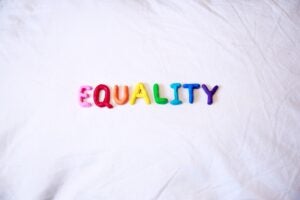
Although sexuality is not binary, there are two categories that can be used to describe different types of sexual orientations: monosexual and plurisexual. Monosexual people are attracted to a single gender—namely heterosexuals and homosexuals. Plurisexual individuals, however, feel attraction to multiple genders. Plurisexuality includes people within the bisexual, pansexual, queer, or fluid communities.4 The acronym “LGBTQIAP” stands for “Lesbian, Gay, Bisexual, Transgender, Queer/Questioning, Intersex, Asexual, Pansexual” and is used to describe the community of people who identify as something other than heterosexual and/or cisgender.5 Given that it incorporates Intersex, Asexual, and Pansexual people, it is more inclusive than the “LGBTQ” acronym, which places all non-LGBT identities under the “Queer” heading. As evidenced by models of sexual orientation, it is possible for a person to identify with multiple sexual orientations as well as multiple gender identities. Notably, plurisexual individuals are more likely to describe primary identities (the sexual orientation one best identifies with) and secondary identities (additional descriptions of one’s sexual orientation) than monosexual individuals.4
There are a variety of different sexual orientations with which a person might identify, all of which are independent of their gender and gender identity. This article provides an introduction to the most common sexual orientations, as well as the particular features that make each category and its individuals unique. The following list is organized alphabetically.
Table of Contents
Androsexuality/Androphilia
Androsexuality or androphilia is defined as attraction to men, males, and/or masculinity.6 This definition does not limit a person to one specific sexual orientation, but can be felt by members of multiple categories. For example, a heterosexual woman and a gay man are both androphillic as they are sexually interested in males.
Aromanticism
People who do not feel romantic desire are considered aromantic.7 Being aromantic is not the same as being asexual, as an asexual identity does not rule out the possibility of romantic relationships. Like asexuality, aromanticism can often be misconstrued as “not having found the right person.” However, it is a known sexual orientation, and as such cannot be willfully altered. While they are not related to one another, aromanticism and asexuality are not mutually exclusive identities, and an individual can possess both. Aromantic asexuals are not interested in pursuing either sexual or romantic relationships with others.8
Asexuality
A person who identifies as asexual generally does not experience sexual attraction or has little to no desire to engage in sexual activity.9 This is not the same as having a sexual dysfunction or choosing celibacy; asexuals simply do not desire sex.10 On the Kinsey scale, which describes the spectrum of sexual orientation, asexuality is given its own separate category known as category X. Category X includes those who do not feel sexual attraction or have sexual desire. Research shows that asexuality can be defined as a lack of sexual behavior, lack of sexual attraction, self-identification as asexual, or a combination of these. Interviews conducted with a group of asexual people revealed that those in relationships often consented to sex with their partner when asked, yet derived no physical pleasure or increased emotional attachment from the act.7 Although they do not necessarily enjoy or desire to have sex, people who identify as asexual still desire romantic relationships with people of the same or other genders. While the overall definition of asexuality describes a lack of sexual desire, the identity can vary from person to person with regard to feelings on relationships or how asexuality factors (or does not factor) into their everyday life.11
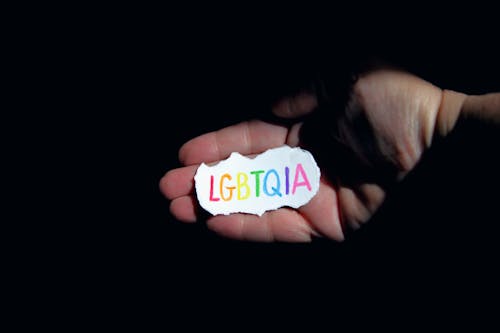
Given that a major defining element of asexuality is self-identification (and thus a prior understanding of the term), it is often difficult for researchers to gain clear and unbiased insight into the asexual population. However, it is estimated that approximately 1% of the population is asexual.11 A questionnaire known as the Asexuality Identification Scale (AIS) works to combat this shortage of accurate information. The AIS makes use of both open-ended and multiple choice questions, and is inclusive to people of all genders and sexual orientations. It allows for further research into asexuality, especially among those who have not yet discovered the term.12
For most sexual minorities, the process of coming out is a way for individuals to find self-acceptance, community, and access to more romantic and sexual partners. Interviews with a selected group of asexual individuals has given researchers a closer look at how asexuals experience coming out to themselves, their friends, and their family. During the study, many reported that coming out was an essential step toward embracing their identity, while others feared/experienced rejection or de-legitimization from those they opened up to. Asexual individuals may require more awareness of their sexual feelings (or lack thereof) than most other sexual orientations, as information on asexuality is notably less prevalent. However, upon discovering asexuality, many find joy and relief in finally having a term with which to describe themselves.9 Feeling a lack of sexual attraction to others is deemed to be outside of the norm, and is not well understood (and as such, often stigmatized) by those who do experience sexual attraction. People may not think that it is possible not to desire sex simply because a larger portion of the population enjoys and seeks it. Although some believe that asexual people have simply “not met the right person” or refuse to believe in its existence at all, asexuality is a recognized and legitimate sexual orientation, and coming out as such is an important part of self-acceptance, understanding, and possession of a positive identity.9
Bisexuality
Often simply referred to as “bi,” a person who is bisexual is attracted to people of both their own and another gender. It most commonly refers to people who are attracted to both men and women, yet some bisexual people have a preference for one gender over another. While the prefix “bi” does mean “two,” or “both,” this term does not indicate the presence of a gender binary—the idea that there are only two genders.13 Rather, it simply implies attraction to two genders: one’s own and one that is not one’s own.

Bisexuality is often de-legitimized by other sexual orientations, and thus it is often ignored or erased. Bisexuals often feel invisible in society. For example, many view a bisexual person’s sexual interactions with both men and women as a stepping-stone to homosexuality, or that those who claim to be “bisexual” are actually homosexuals who are not ready to come out of the closet, that they wish to retain a semblance of heterosexual privilege, or that they are straight people acting out for attention. Interestingly, research indicates that people are more likely to perceive bisexual men as more homosexual than bisexual women. This view of bisexual men supports the “one-drop rule” in which people define someone as homosexual based on a singular homosexual encounter.14 According to a study of bisexual behavior among gay men, many men do use bisexuality as a way of slowly coming out and adjusting to a gay identity. Bisexual men, however, retain their bisexual identity and continue to experience sexual, romantic, and emotional attraction to women throughout their lives.15 Further, bisexual people often receive increased criticism and suffer more discrimination than homosexuals, as they can be rejected from both the heterosexual and homosexual communities. Heterosexual people may believe that bisexuals are not straight enough to belong in their community, and homosexual people might think that they are too straight to belong within their community. Both straight and gay individuals may even refuse to believe in bisexuality as a sexual orientation, invalidating bisexual individuals altogether. However, bisexuality is a recognized sexual orientation, and does exist within the LGBTQIAP community as a whole.

Although personality and sexual orientation are generally separate entities, there is evidence to show that some personality traits are closely associated with bisexuality. In an online study conducted by Cornell University, bisexual men and women were surveyed regarding prevalence of their sexual excitability, sexual curiosity, and sexual sensation seeking behaviors. It was found that men and women who self-identify as bisexual showed increased levels of sexual curiosity and sensation seeking, and that women especially exhibited greater sexual excitability.16 In visualizing bisexual relationships, many believe that committed, monogamous partnerships are difficult or impossible to maintain due to the supposed promiscuous and hypersexual nature of bisexual individuals. However, relationships involving bisexual individuals are not unlike those of homosexual or heterosexual couples. The results of one study show that 78.4% of participating bisexual men and 67% of bisexual women were either in a serious relationship, engaged, or married.17 Though it may be initially challenging for a bisexual person to find a comfortable and trusting relationship with a heterosexual or homosexual individual because of this stigma, it is possible and common for them to share loving, committed, and long-lasting partnerships.18 Interviews with Finnish couples involving bisexual individuals demonstrated that they desire relationships that are just as meaningful and committed as heterosexual and homosexual individuals. Couples emphasized the presence and importance of romantic love within their current relationship, as well as their desire to love and commit fully to their partner regardless of their attraction to other genders.18 Present research supports the notion that the stereotypical infidelity and promiscuity often associated with bisexuality is inaccurate.
Demisexuality
Conceptualized as a “gray area” between sexuality and asexuality, demisexuality encompasses those who do not feel sexual attraction to others unless they feel emotionally connected to them. Demisexuality relates most to the formation of committed romantic relationships, but does allow for other types of relationships—such as sexual relationships—to form as well.19 An emotional bond can range from a brief yet intense period of closeness to a close friendship of many years. Bonding does not inherently imply that sexual attraction will occur, but it must be present in order for attraction to develop.

It is often thought that most people do not wish to have sex prior to forming an emotional attachment to another person and that therefore, most people are demisexual. However, these feelings are not reflective of demisexuality. Sexual people (people on the sexual end of the asexuality spectrum) may feel sexually attracted to anyone(celebrities, acquaintances, or passing strangers) but do not wish to act upon their desires without getting to know them. On the other hand, demisexual individuals feel no sexual attraction to a person unless they have previously formed a close emotional bond. Many demisexual adolescents find it distressing to discuss sexual topics with their friends, as they cannot understand why they do not feel sexual attraction as it begins to emerge within their peer groups. Asexual teenagers may experience the same feelings. While demisexuality does share some characteristics with asexuality, the key difference between the two is that demisexuals are capable of sexual attraction under specific circumstances, while asexuals feel no sexual attraction at all, regardless of their situation or partner. Labeling demisexuality as a sexual orientation allows demisexuals to find support and understanding within a community who can relate to their feelings and experiences. Given that many demisexuals feel as though they are “broken” because of their inability to feel sexual desire without emotional bonding, it is important to accept and support their community in order to foster a sense of well being and security.20
Gynesexuality/Gynephilia
People who are erotically attracted to women, females, and/or femininity are known to be gynesexual or gynephillic. Gynesexuality does not specify an individual’s gender as the term “lesbian” would, but simply denotes that they are sexually drawn to feminine qualities. Much like androsexuality, this definition includes people identifying with different sexual orientations. A heterosexual man and a lesbian woman are gynephillic in that they are attracted to women.6
Heterosexuality
Heterosexuality is a term used to describe a person who is physically, emotionally and/or romantically attracted to individuals of a gender other than their own. For example, a man who is attracted solely to women would be considered heterosexual. Although heterosexuality is often thought of as sexual, emotional and/or romantic attraction to the opposite sex, the existence of more than just two sexes (such as intersex individuals) renders this definition obsolete.21 Furthermore, this definition assumes that “sex” and “gender” are interchangeable. However, heterosexuality actually refers to attraction to gender, and as discussed previously, gender lies on a spectrum, not a binary. People who identify as heterosexual are colloquially referred to as being “straight,” and are often regarded as members of the societal sexual majority. As members of the hegemonic norm, it is not uncommon for heterosexual individuals to believe that everyone around them is heterosexual, that this is the only “normal” or “correct” sexual orientation, or even that it is superior to other orientations. These beliefs constitute heteronormativity and heterosexism, and have historically fueled discrimination against those who do not identify with heterosexuality. Further, heterosexual individuals often do not realize the privileges they enjoy in everyday life, and tend to take the ease with which they navigate the public social sphere for granted.21 For example, heterosexual couples can express affection publicly, and may kiss, hug, or hold hands without the fear of ridicule or hostile behavior. Most can have children and start families that are unequivocally affirmed, recognized, and legitimized by others. They can marry when and where they wish without facing moral opposition, practice any religion without being ostracized, and may apply for any job without fearing being fired based on their sexual orientation.22

As the dominant group in the realm of sexual orientation, it is not surprising that heterosexual individuals harbor both positive and negative stereotypes about those who fall elsewhere on the Kinsey scale. However, a 2016 study by the University of Michigan reveals that gay, lesbian, and bisexual people have their own stereotypes about heterosexuals. Researchers interviewed members of the LGBTQ community to gain more meaningful insight into how minority sexual orientations view the majority. Heterosexual males were commonly associated with themes of hypermasculinity and hypersexuality, ignorance, indifference, and intolerance of the other sexual orientations, and an overall closed-minded and sexist outlook on the world. Heterosexual women were tied more closely with traditional gender roles—marriage, childbearing and childrearing, housework, and devotion to men. Some lesbian women interviewed highlighted the feminine and submissive nature of heterosexual women, and criticized their apparent lack of independence for “conformity” to gender norms. Others, however, remarked on how accepting heterosexual women are of the LGBTQ community. Those interviewed in the study believe heterosexual people are generally more prejudiced, ignorant, judgmental, and even boring than those who identify with other sexual orientations.23 However, it is important to remember that these beliefs are not necessarily held by all members of the community, and that these stereotypes do not necessarily hold true. Heterosexual individuals are not all judgmental, ignorant, aggressive, and intolerant toward sexual minorities.
Homosexuality
A person who identifies as homosexual is one who is physically, romantically and/or emotionally attracted to individuals of the same gender with which they identify. A man who is attracted to other men is usually referred to as “gay”. However, a woman who is attracted to other women may prefer to be called “a lesbian”. Other people in the LGBTQ community that are not homosexual sometimes refer to themselves as gay, although they may not identify as gay. While homosexuality does accurately describe the type of attraction felt by some members of the community, the term is often seen as clinical or indicative of a psychological disorder or abnormality, and may be offensive to some. More specific terms, such as gay and lesbian, are preferable for everyday use.2

Society has a habit of labeling those who do not necessarily comply with its set “rules” as outsiders, and ostracizes them through association with negative characteristics and hurtful stereotypes. Homophobic labels and behaviors induce feelings of alienation among LGBTQ individuals, which makes it more difficult for them to find self-acceptance and comfort.24 Discriminatory ideology can heavily impact daily life for gay men and lesbian women. Aside from religious hostility or workplace discrimination25, members of the LGBTQ community also face prejudice in health care as well. It has been found that many health care providers demonstrate both implicit and explicit bias in favor of heterosexual people, by assuming that they are at a lower risk for certain health conditions than homosexual people. As a result, gay men and lesbian women are far less often selected for health care coverage than heterosexuals.26 Homosexuality often imbues people with the unfortunate weight of discrimination in all walks of social life. Yet where there is intolerance, insensitivity, and ignorance from the outside majority, many discover safety, acceptance, and unique belonging within the LGBTQ community. Individuals who may not feel that they fit the mainstream ideals of a gay man or lesbian woman can seek company in the various subcultures of the community. For example, the Bear community welcomes and appreciates men with larger, hairier bodies and more masculine features. While Bears might be ridiculed or left out of the mainstream community, they can discover a belonging among others who share the predicament of being outsiders within an already-marginalized group.27


Lesbians also have subcultures within the community that can help them better identify themselves and find a greater sense of belonging. Of the several different ways in which lesbians are perceived, two types are predominantely recognized. “Butch” lesbians tend to embody more masculine features, haircuts, and clothing styles, while “lipstick lesbians” may dress and carry themselves in a more feminine manner. It should be made clear that both of these termonologies can be viewed as derogatory or homophobic. While some lesbians embrace these labels, others do not feel as though they fit into the description of either. It is evident that there is no singular “look” or “style” that demarcates an individual as gay or lesbian. A study conducted among lesbian and bisexual women regarding the “lesbian look” revealed that while there do exist certain stereotypical elements of the look—most women experiment to discover a style that represents them as an individual.28 Although subcultures provide an outlet for expressions of unique styles and characteristics within the LGBTQ community, people feel a stronger need to be authentic versions of themselves, rather than uphold given “norms” or stereotypes of the group as a whole.
Pansexuality
The word “pansexual” is derived from the Greek prefix “pan,” meaning “all.” People who identify as pansexual (or “omnisexual” in some cases) are attracted to others regardless of sex or gender. This includes attraction to people who identify as male, female, transgender, intersex, third gender, genderqueer, or anything in between.2 Being pansexual does not mean that a person is attracted to anyone and everyone—only that they do not prefer any one gender to another. For example, a demisexual pansexual person has the potential to feel sexually attracted to any gender, yet cannot feel this attraction prior to forming an emotional bond. Hence, pansexual people do not necessarily desire every person they encounter.
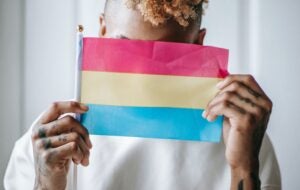
Like bisexual people, some pansexual individuals may have a stronger or weaker preference for a certain gender.29 However, those within the pansexual community draw a clear line between their sexual identity and bisexual identities. While pansexuality includes attraction to both men and women and does fall under the “bisexuality umbrella,”30 it rejects the gender binary implied by bisexuality.31 Pansexual individuals are attracted to others falling anywhere on the gender spectrum, as opposed to any specific genders.32
Although it is not a new term, pansexuality has seen a resurgence of use and discussion given increased gender fluidity among millenials. Celebrities such as Miley Cyrus have identified themselves as pansexual, presenting the term with pride and excitement. It is a often adopted by those who feel that they do not fit into heterosexual or homosexual categories as Cyrus does, or those who are attracted to gender non-binary individuals in addition to those of the same and opposite gender. Pansexuality is represented as all encompassing and non-restrictive, and includes both sexual and romantic attraction.31, 32
Queer
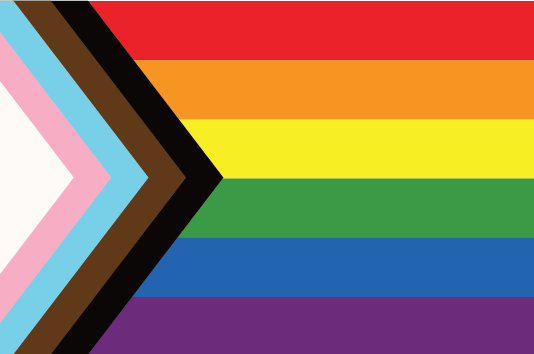
Sometimes, one may perceive the labels of straight, gay, lesbian, bisexual, or pansexual to be too confining, or feel as though none of these categories truly encompass their sexual orientation.2 “Queer” serves as an umbrella term for all non-heterosexual, non cis-gender identities. For example, a bisexual person who does not feel comfortable identifying as “bisexual” or a lesbian woman who does not wish to identify as “lesbian” can both identify as queer. For those who feel that they cannot define their sexual orientation, or that their feelings of sexual, romantic, or emotional attraction do not fit into a specific category, identifying as queer may ease the tension of a set sexual description.
Based on interviews with self-identified queer women at the University of California, Santa Barbara, the definition of “queer” can be seen as a more fluid and specifically non-binary sexual orientation, and can be used to describe a singular sexual identity or include other identities (such as gay, lesbian, bisexual, or pansexual).33 Given its less rigid and more inclusive definition, many people identify as queer while they are still attempting to understand their sexuality, while others feel that the term suits their feelings of attraction better than any other.
Much like pansexuals, queer-identified individuals believe that there are more than just two genders, and many find themselves attracted sexually, romantically, and/or emotionally to people regardless of their gender identification. Queer individuals may also prefer some gender identifications to others, especially if they do not feel comfortable identifying with a more specific sexual orientation (such as homosexuality or bisexuality). Many queer people appreciate the open-endedness of the term and their ability to move within it. It is seen as less confining than other categories, and allows for fluidity, exploration, and authentic self-expression.32 Although there is a more limited selection of literature detailing orientations of the “sexual borderlands,”32 queer identities are growing in general discussion, and are becoming more accepted and understood.
Concluding Remarks
The topic of sexual orientations is expansive, and the spectrum of identities allows individuals the freedom to choose which definition best represents them. However, it is just as acceptable for people to choose not to identify or confine themselves to a single category. By accepting and embracing your and others’ sexual identity (especially for those outside the heterosexual “norm”) it is possible to find solidarity within a welcoming and supportive community of individuals who have similar feelings, backgrounds, and stories. While all sexual identities are quite different from one another, it is important to recognize the validity and uniqueness of all sexual orientations, and to never ridicule or belittle another person for their feelings of attraction. Sexual orientation, while not a fixed identity, cannot be intentionally altered, and thus the attraction one feels cannot be changed to fit a heteronormative culture.7 The presence of many unique sexual orientations does not imply abnormality or “sexual deviance”—rather, it simply adds to diversity.
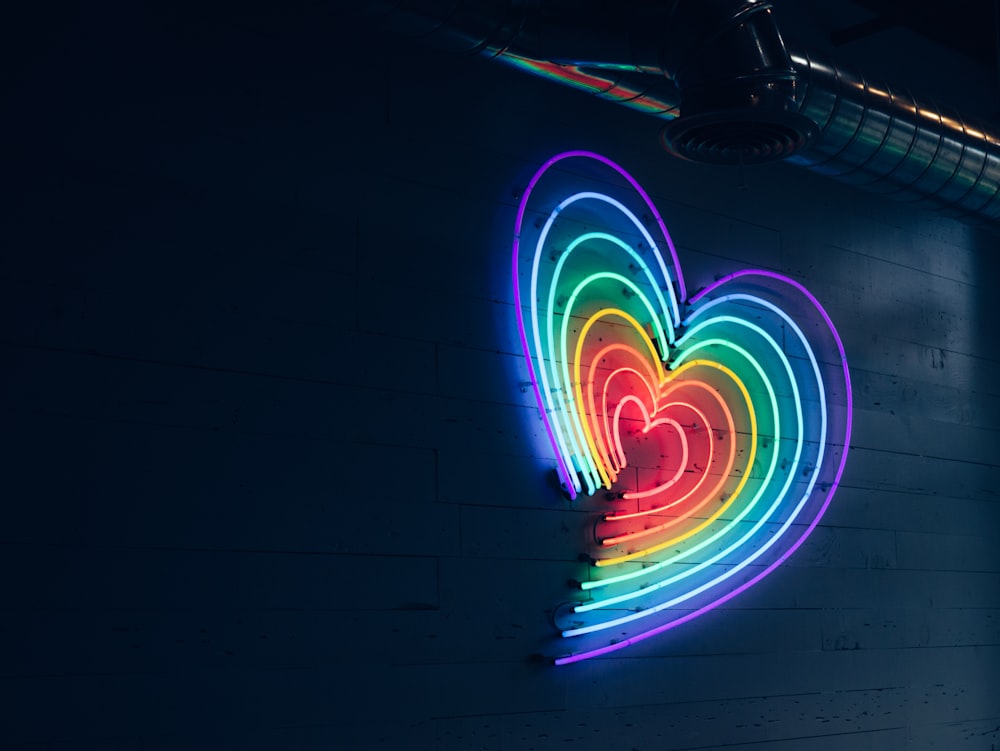
This article has provided an overview of each of the main orientation categories. For more details on specific sexual orientations, as well as other subjects in sex and gender, please explore the Gender, Identity, and Sexual Orientations topic and Sexual Identities section on our website.
References
1. “Sexual Orientation and Gender Identity 101.” UUA. Unitarian Universalist Association, 29 October 2014. Accessed 29 Jan 2015.
2. “GLAAD Media Reference Guide – Lesbian/Gay/Bisexual Glossary of Terms.” glaad.org. GLAAD. Accessed 1 Feb 2017.
3. “The Kinsey Scale.” kinseyinstitute.org. Kinsey Institute Indiana University. Accessed 27 Feb 2017.
4. Galupo, M. Paz et al. “Sexual Minority Self-Identification: Multiple Identities and Complexity.” proquest.com. 2.4, American Psychological Association. 2015. Accessed 27 Feb 2017.
5. Huante, David. “Terms, Definitions & Labels.” amherst.edu. 2016. Accessed 12 Mar 2017.
6. Fisher, Terri D. et al. Handbook of Sexuality-Related Measures. 1988. Accessed 27 Feb 2017.
7. “A Comprehensive List of LGBTQ+ Terms Definitions.” It’s Pronounced Metrosexual. Accessed 29 Jan 2015.
8. Van Houdenhove, Ellen et al. “Asexuality: Few facts, many questions.” proquest.com. 40.3, Journal of Sex & Marital Therapy. May 2014. Accessed 26 Feb 2017.
9. Robbins, Nicolette K. et al. “A Qualitative Exploration of the ‘Coming Out’ Process for Asexual Individuals.” link.springer.com. 45.3, Archives of Sexual Behavior. 3 Sept 2015. Accessed 26 Feb 2017.
10. “LGBT Terms and Definitions.” University of Michican. Accessed 29 Jan 2015.
11. Scott, Susie et al. “Asexual Lives: Social Relationships and Intimate Encounters.” discoversociety.org. Discover Society. 3 Jun 2014. Accessed 27 Feb 2017.9.
12. Yule, Morag A. et al. “A validated measure of no sexual attraction: The Asexuality Identification Scale.” proquest.com. 27.1, American Psychological Association. Mar 2015. Accessed 26 Feb 2017.
13. “Does identifying as bisexual reinforce a false gender binary?” bisexual.org. Accessed 12 Mar 2017.
14. Flanders, Corey Elizabeth et al. “Social perception of Bisexuality.” proquest.com. 5.3, Department of Psychology, University of Hawaii at Manoa. Jul 2014. Accessed 26 Feb 2017.
15. Semon, Theodore L. et al. “Bisexual phenomena among gay-identified men.” proquest.com. Archives of Sexual Behavior. 15 Sept 2016. Accessed 26 Feb 2017.
16. Stief, Matthew C. et al. “Bisexuality is associated with elevated sexial sensation seeking, sexual curiosity, and sexual excitability.” proquest.com. 66, Personality and Individual Differences. Aug 2014. Accessed 26 Feb 2017.
17. Mark, Kristenet al. “‘Bi’ing into monogamy: Attitudes toward monogamy in a sample of bisexual-identified adults.” proquest.com. 1.3, American Psychological Association. Sept 2014. Accessed 26 Feb 2017.
18. Lahti, Annukka. “Similar and equal relationships? Negotiating Bisexuality in an Enduring Relationship.” proquest.com. 25.4, Feminism & Psychology. Nov 2015. Accessed 26 Feb 2017.
19. Mosbergen, Dominique. “The Asexual Spectrum: Identities in the Ace Community (INFOGRAPHIC).” huffingtonpost.com. Huffington Post. 2 Feb 2016. Accessed 27 Feb 2017.
20. “What is Demisexuality?” demisexuality.org. Demisexuality Resource Center. 2015. Accessed 27 Feb 2017.
21. “Berkeley Centers for Educational Justice & Community Engagement: Definition of Terms.” UC Berkeley Division of Equity & Inclusion. UC Berkeley. Jul 2013. Accessed 24 Feb 2017.
22. “Safe Zone: Heterosexual Privilege: The Benefits of Being a Heterosexual.” usd.com. University of South Dakota. Accessed 24 Feb 2017.
23. Matsick, Jes L. et al. “Cultural Stereotypes and Personal Beliefs: Perceptions of Heterosexual Men, Women, and People.” proquest.com. 3.1, American Psychological Association. 2016. Accessed 24 Feb 2017.
24. Iudici, Antonio and Massimo Verdecchia. “Homophobic Labeling in the Process of Identity Construction.” proquest.com. 19.4, American Journal of Men’s Health. Dec. 2015. Accessed 25 Feb 2017.
25. Kuyper, Lisette. “Differences in Workplace Experiences Between Lesbian, Gay, Bisexual, and Heterosexual Employees in a Representative Population Study.” proquest.com. 2.1, American Psychological Association. 2014. Accessed 24 Feb 2017.
26. Sabin, Janice A., PhD et al. “Health Care Providers’ Implicit and Explicit Attitudes Toward Lesbian Women and Gay Men.” proquest.com. 105.9, American Journal of Public Health. Sept 2015. Accessed 25 Feb 2017.
27. McGrady, Patrick B., PhD. “‘Grow the Beard, Wear the Costume’: Resisting Weight and Sexual Orientation Stigmas in the Bear Subculture.” proquest.com. 63.12, Journal of Homosexuality. Dec. 2016. Accessed 26 Feb 2017.
28. Halliwell, Emma et al. “Resisting and conforming to the ‘lesbian look’: the importance of appearance norms for lesbian and bisexual women.” proquest.com. 24.3, Journal of community and applied social psychology. May 2014. Accessed 26 Feb 2017.
29. Stop Homophobia. 2015. Accessed 29 Jan 2015.
30. Bowerman, Mary. “What does it mean to be pansexual?” usatoday.com. USA Today. 12 Oct 2016. Accessed 27 Feb 2017.
31. Grinberg, Emanuella. “What it means to be pansexual.” cnn.com. CNN. 10 Oct 2016. Accessed 27 Feb 2017.
32. Callis, April S. “Beyond the Binary: Identity, subjectivity, and the sexual borderlands.” proquest.com. Purdue University. 2011. Accessed 27 Feb 2017.
33. Sets, Jan E. et al. New Directions in Identity Theory and Research. 2016. Accessed 27 Feb 2017.
Last Updated: 14 March 2017.
